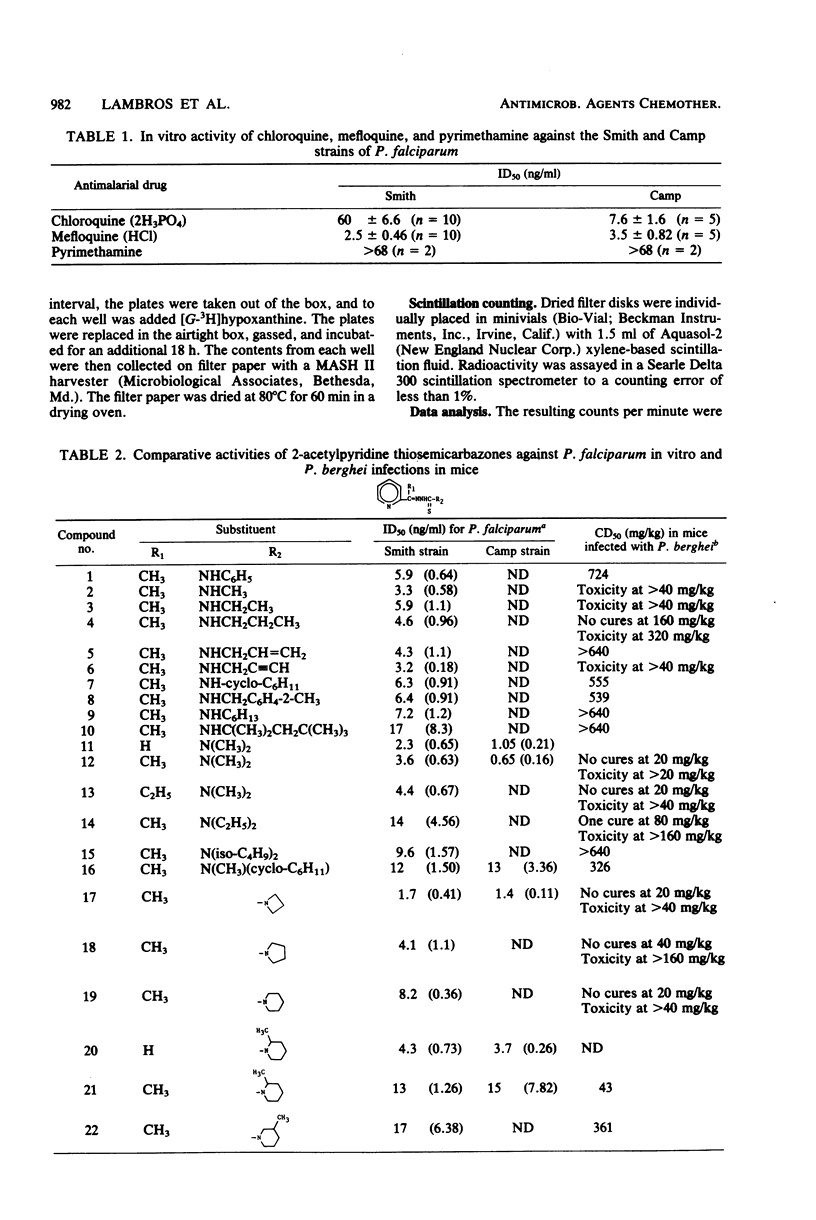Abstract
A series of 2-acylpyridine thiosemicarbazones was evaluated in vitro against a chloroquine-resistant Plasmodium falciparum strain. Antimalarial activity was assessed by the inhibition of uptake of [G-3H]hypoxanthine by the parasites. Among the mono- and disubstituted derivatives tested, 13 of 17 had 50% inhibitory doses of less than 10 ng/ml. Increasing the size of the ring at N4 from four to five, six, and seven members produced concomitant decreases in activity. Similarly, increasing the size of the aliphatic substituent on the azomethine carbon reduced activity. Selected compounds were also tested against a chloroquine-susceptible strain. The results suggested that the activities of these agents were not modified significantly by resistance to chloroquine. In general, in vitro activities correlate poorly with the in vivo activities in mice infected with Plasmodium berghei.
Full text
PDF



Selected References
These references are in PubMed. This may not be the complete list of references from this article.
- Canfield C. J., Whiting E. G., Hall W. H., MacDonald B. S. Treatment of acute falciparum malaria from Vietnam with trimethoprim and sulfalene. Am J Trop Med Hyg. 1971 Jul;20(4):524–526. doi: 10.4269/ajtmh.1971.20.524. [DOI] [PubMed] [Google Scholar]
- Desjardins R. E., Canfield C. J., Haynes J. D., Chulay J. D. Quantitative assessment of antimalarial activity in vitro by a semiautomated microdilution technique. Antimicrob Agents Chemother. 1979 Dec;16(6):710–718. doi: 10.1128/aac.16.6.710. [DOI] [PMC free article] [PubMed] [Google Scholar]
- Haynes J. D., Diggs C. L., Hines F. A., Desjardins R. E. Culture of human malaria parasites Plasmodium falciparum. Nature. 1976 Oct 28;263(5580):767–769. doi: 10.1038/263767a0. [DOI] [PubMed] [Google Scholar]
- Klayman D. L., Bartosevich J. F., Griffin T. S., Mason C. J., Scovill J. P. 2-Acetylpyridine thiosemicarbazones. 1. A new class of potential antimalarial agents. J Med Chem. 1979 Jul;22(7):855–862. doi: 10.1021/jm00193a020. [DOI] [PubMed] [Google Scholar]
- Klaymann D. L., Scovill J. P., Bartosevich J. F., Mason C. J. 2-Acetylpyridine thiosemicarbazones. 2. N4,N4-Disubstituted derivatives as potential antimalarial agents. J Med Chem. 1979 Nov;22(11):1367–1373. doi: 10.1021/jm00197a017. [DOI] [PubMed] [Google Scholar]


